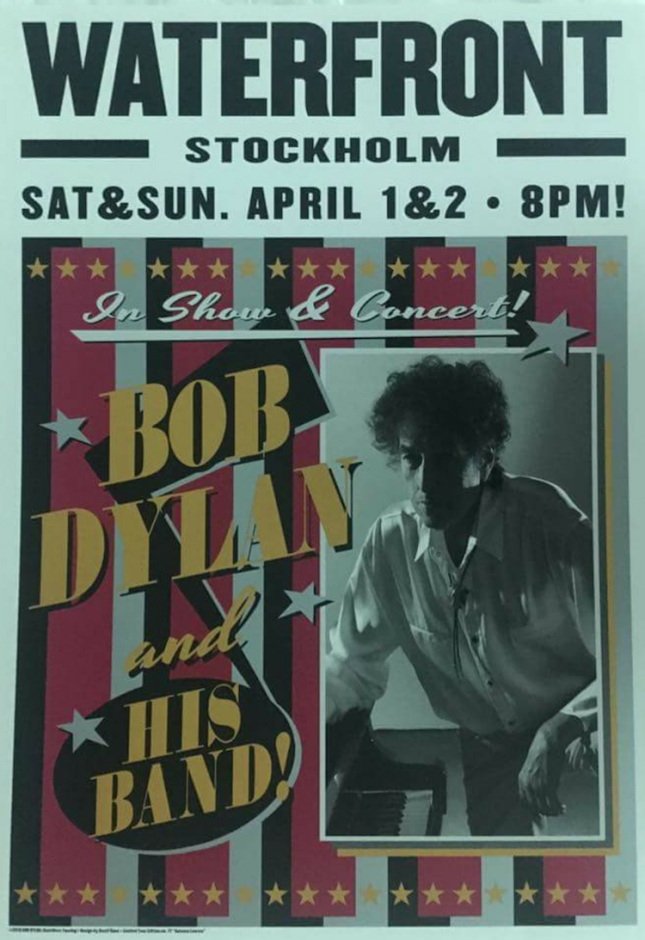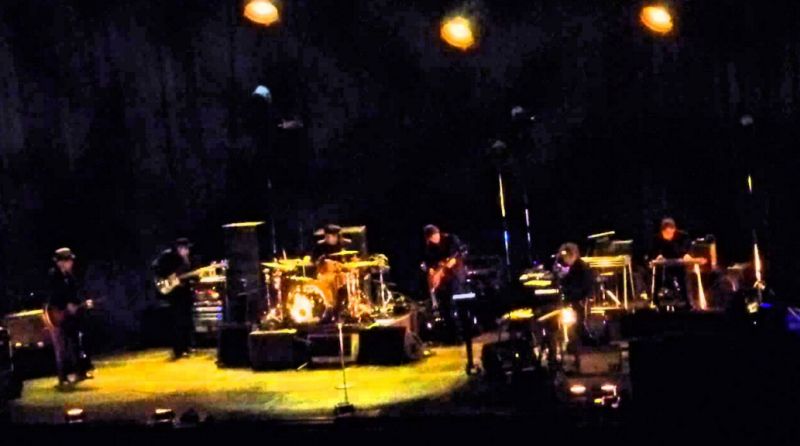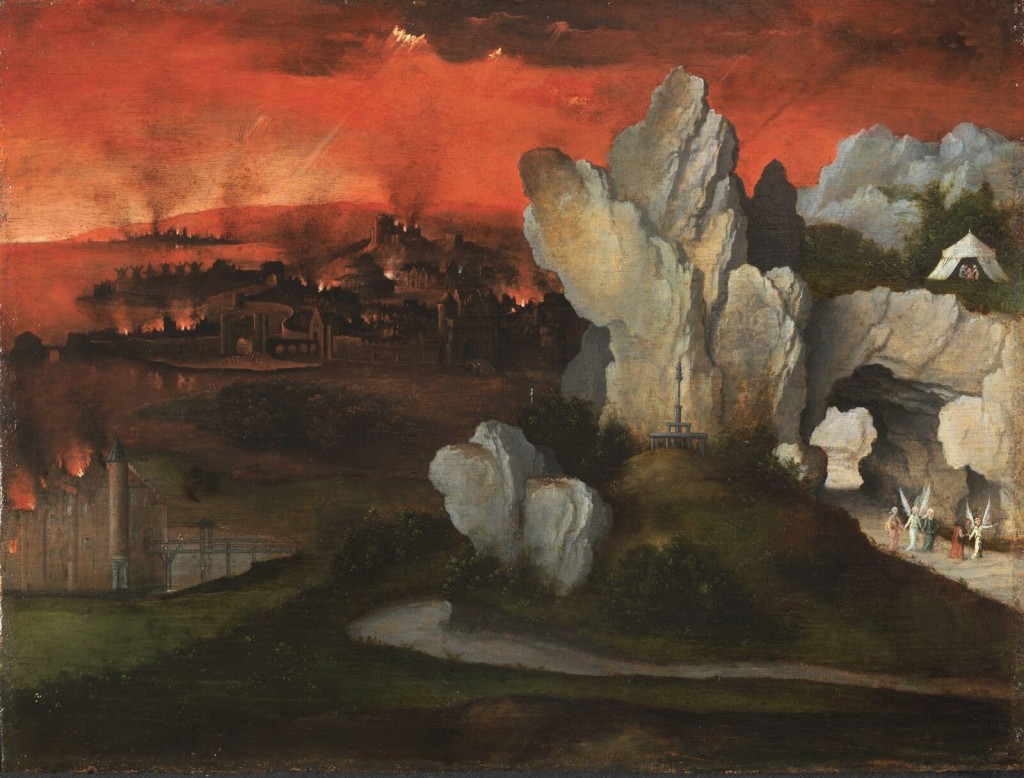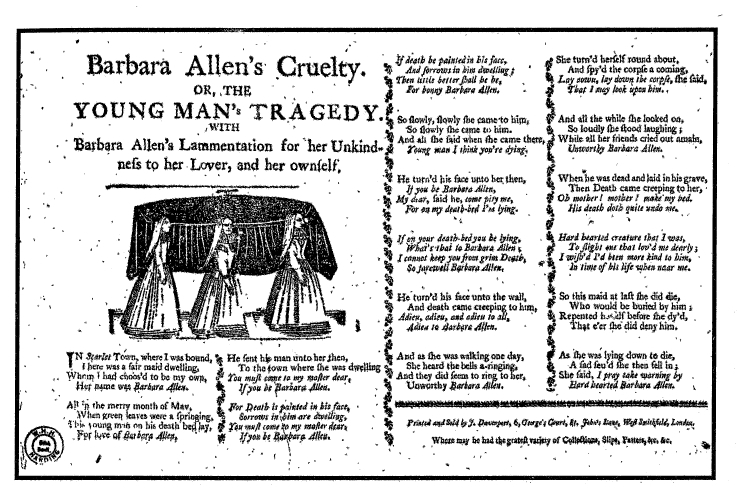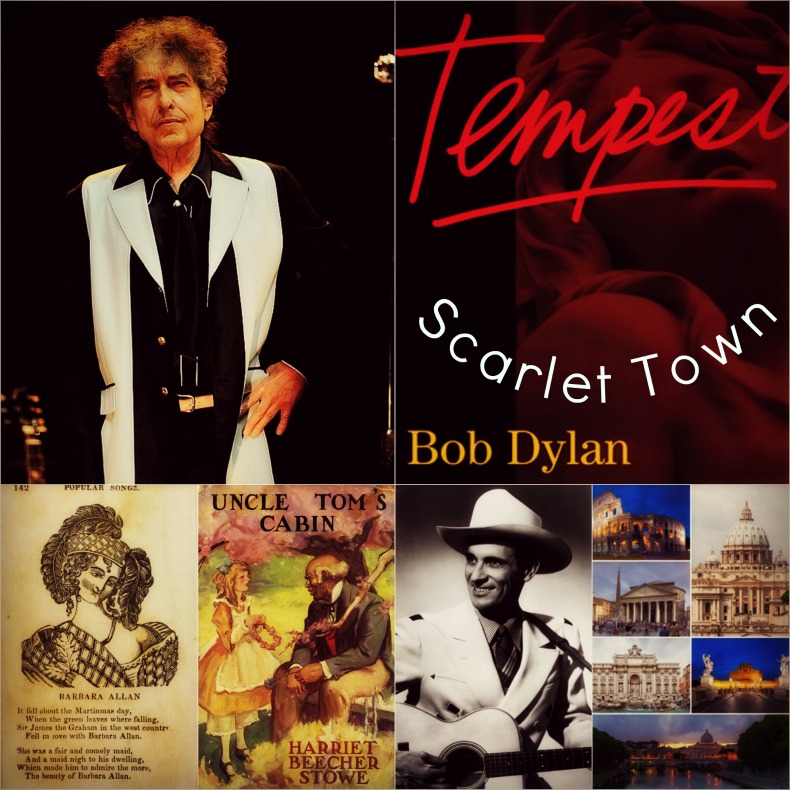
[vc_row][vc_column][vc_message message_box_color=”mulled_wine” icon_fontawesome=”fa fa-quote-left”]In Scarlet Town where I was born
There’s ivy leaf and silver thorn
The streets have names you can’t pronounce
Gold is down to a quarter of an ounce[/vc_message][/vc_column][/vc_row]
[vc_row][vc_column][vc_message message_box_color=”mulled_wine” icon_fontawesome=”fa fa-quote-left”]“Scarlet Town” was inspired by “Barbara Allen,” a seventeenth-century English or Scottish traditional ballad brought by immigrants to the New World. A recording of “Barbara Allen” can be found on the album Live at the Gaslight 1962, a collection of early Dylan performances at the Gaslight Cafe in New York City. “Scarlet Town” has other allusions as well, including echoes of the children’s nursery rhyme “Little Boy Blue,” the country hit “I’m Walking the Floor Over You” by Ernest Tubb, and even a reference to Uncle Tom’s Cabin by Harriet Beecher Stowe with the line in the first verse, “Uncle Tom still workin’ for Uncle Bill.” But beyond these references, the picture drawn is pure Dylan. He clearly describes a damned city, a new alley of desolation with “beggars crouching at the gate,” where “evil and the good [are] livin’ side by side.”
-Margotin, Philippe; Guesdon, Jean-Miche (Bob Dylan All the Songs: The Story Behind Every Track)
[/vc_message][/vc_column][/vc_row]
Spotify:


